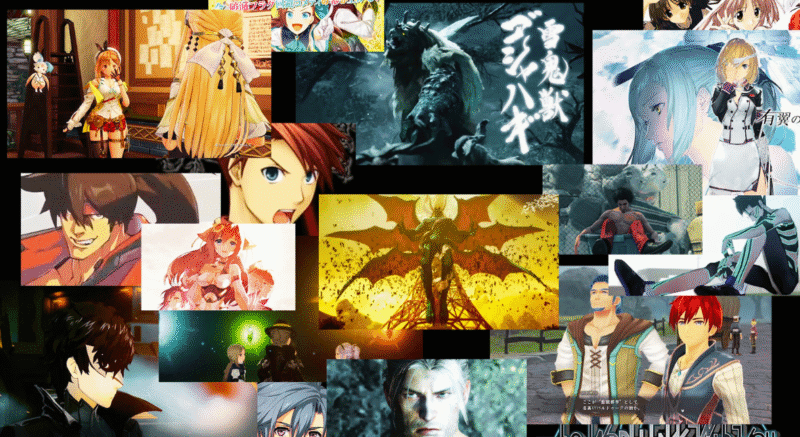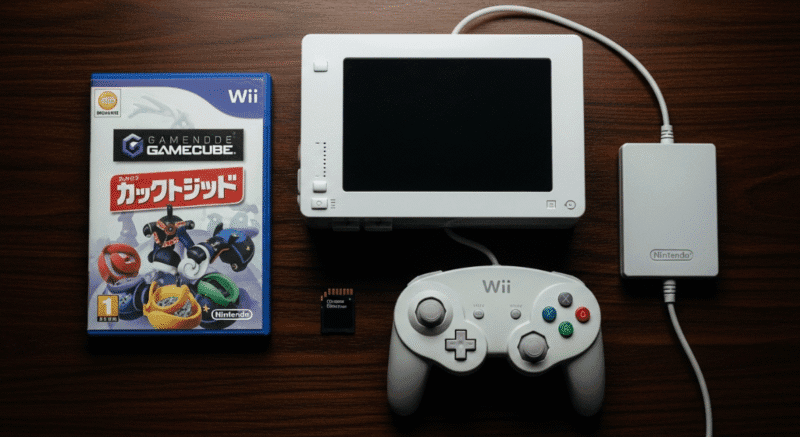The Nintendo GameCube and Wii boast incredible game libraries, but many celebrated titles from the quirky Captain Rainbow to the ambitious Doshin the Giant—were never released outside of Japan. For gaming enthusiasts, accessing these Japan-exclusive games can feel like a maze of technical and ethical hurdles. You might run into confusing region locks, frustrating text glitches, or uncertainty about the legal risks of acquiring game files.
This is your definitive, all-in-one guide to solving those problems. We’ll walk you through the clear, step-by-step process of configuring the Dolphin emulator for these unique titles, explaining the why behind each critical step. More importantly, we’ll establish a responsible framework for acquiring game files legally, so you can play with both technical skill and ethical confidence.

Why Japanese Games Require a Special Approach
Before you touch any settings, it’s crucial to understand why Japanese games need special configuration to run on the Dolphin emulator. The main obstacles are digital recreations of the physical and software-based regional restrictions built into the original consoles. Getting this part wrong is the source of most user frustration.
Deconstructing Region Locking: A Quick Guide to NTSC-J, NTSC-U, and PAL
In the GameCube and Wii era, console makers used region locking to manage international release schedules and pricing. This divided the world into three main territories, each with a unique technical standard. A game disc from one region was designed to be unplayable on a console from another.
These regions are:
- NTSC-J: The standard for Japan.
- NTSC-U: The standard for North America (USA, Canada, Mexico).
- PAL: The standard for Europe, Australia, and other territories.
The key technical difference was the TV refresh rate. NTSC regions run at 60Hz, while PAL regions use 50Hz. This sometimes meant PAL games ran slightly slower if they weren’t optimized properly. For our purposes, the main takeaway is that Japanese game files are encoded for the NTSC-J region.
| Region | Primary Countries | Refresh Rate | Key Consideration |
| NTSC-J | Japan | 60Hz | Required for Japanese-language exclusive games. |
| NTSC-U | USA, Canada, Mexico | 60Hz | The standard for North American games and consoles. |
| PAL | Europe, Australia | 50Hz | Games may run slightly slower if not optimized. |
The Most Common Mistake: Game Files vs. Emulator Settings
A frequent mistake is thinking that just changing Dolphin’s language setting will translate a game. This is incorrect. The in-emulator language setting only works if the original game file contains multiple language tracks, like a North American release with English, French, and Spanish options.
Games released exclusively in Japan only contain Japanese game data. Therefore, the single most important rule is this: To play a game in Japanese, you must use the Japanese (NTSC-J) version of the game file. No amount of emulator configuration can add a language that isn’t in the source data.
The Responsible Gamer’s Guide: Acquiring Japanese Game Files Legally
Navigating game acquisition is the most sensitive part of emulation. Understanding the legal landscape is key to building trust and enjoying your games responsibly.
The Legal Reality: Understanding Copyright and Game ROMs
Downloading copyrighted game files (known as ROMs or ISOs) from third-party websites is a violation of copyright law if you don’t physically and legally own the game. Video games are protected intellectual property, and unauthorized distribution is an infringement that can carry significant penalties.
The “Fair Use” Doctrine: The Legal Path for Playing Games You Own
The widely accepted legal and ethical way to use emulators centers on creating an “archival copy” of media you’ve legally purchased. This falls under the “fair use” legal doctrine. While courts haven’t made a specific ruling on a user creating a personal backup of a video game, it’s very similar to ripping a legally owned music CD to an MP3 player for personal use.

The existence of emulators themselves is protected by legal precedent. For you, the end-user, the most defensible position is that you are simply playing a game you already own on a different device, like a powerful gaming PC. For added privacy during any online activity, exploring the benefits of using a VPN for online gaming can provide an extra layer of security.
Practical Guide: How to Legally Digitize Your Game Collection with CleanRip
The only legally sound method to get a game file for Dolphin is to create a digital backup from a physical game disc you own. This process is called “ripping” or “dumping.”
You’ll need these tools:
- An authentic, physical Japanese GameCube or Wii game disc.
- A compatible Nintendo Wii console (early models with GameCube controller ports are needed for GameCube games).
- An SD card or USB storage device.
- A Wii console modified with the “Homebrew Channel.”
- The CleanRip software application.
The process is straightforward:
- Install the Homebrew Channel on your Wii.
- Launch CleanRip from the Homebrew Channel.
- Insert your authentic game disc.
- Follow the on-screen prompts in CleanRip to create a perfect 1:1 digital copy (an ISO file) onto your SD card or USB drive.
- Transfer this ISO file to your computer to use with Dolphin.
During testing, we found that a USB 2.0 external hard drive formatted to FAT32 is faster and more reliable than an SD card, especially for large Wii games. Ensure your storage has enough space—up to 4.7 GB for GameCube games and nearly 9 GB for dual-layer Wii discs.
The Legal Path to Emulation: A Flowchart
- Acquire Physical Game: Start with a legally purchased, physical copy of the Japanese game.
- Prepare Hardware: Use a homebrewed Wii with CleanRip installed.
- Create Digital Backup: Use CleanRip to make a 1:1 ISO file of your game disc.
- Transfer and Play: Move the ISO to your computer and load it in the Dolphin emulator.
Step-by-Step Configuration: Setting Up Dolphin for Japanese Titles
With your legally acquired NTSC-J game file ready, it’s time to configure Dolphin to run it correctly. Follow these steps in order to avoid the most common problems.
Step 1: Download and Install the Latest Dolphin Version
Using an up-to-date version of Dolphin is mandatory. The development team constantly releases updates with game-specific fixes, performance boosts, and new features.
Go to the official Dolphin Emulator website at dolphin-emu.org to download the software. We strongly recommend using the latest Development Version (also called a “beta” or “nightly” build). While “Stable” versions are available, the development builds have the most recent bug fixes, which are crucial for running demanding or tricky titles.
Step 2: Configure Core Language and Region Settings
These settings make Dolphin’s emulated console environment match your game’s region, which prevents compatibility errors.
Here’s how to do it:
- Open Dolphin, go to the Options menu, and click Configuration.
- In the General tab, find the System Language dropdown and select Japanese.
- Next, click the Wii tab. Find the System Region dropdown and set it to Japan.
The System Language setting tells games with multiple languages to default to Japanese. The System Region setting is even more critical, ensuring compatibility with the emulated Wii system menu.
Step 3: (Crucial for Text-Heavy Games) Install Japanese System Fonts
One of the most common issues when you play Japanese games is garbled or unreadable text that shows up as squares (often called “tofu”). This happens because many RPGs and visual novels use the console’s native system fonts, which aren’t included with Dolphin or standard Western operating systems. Knowing how to play Windows games on Mac can be helpful, as the fix involves OS-level changes.
The fix is to install the Japanese language pack on your computer. This makes the necessary fonts available for applications like Dolphin.
- For Windows 10/11: Go to Settings > Time & Language > Language & region. Click Add a language, search for “Japanese,” and install it.
- For macOS: Open System Settings > General > Language & Region. Click the + button under Preferred Languages and add Japanese.
This single step is the most reliable way to fix unreadable text and is essential for story-driven games.
Step 4: Basic Controller Configuration
Dolphin has extensive controller options. For a quick setup, go to Options > Controller Settings.
To set up a modern controller (like an Xbox controller), select Port 1 under GameCube Controllers and click Configure. You can then map each virtual GameCube button to a physical button on your device. The process is similar for a Wii Remote under the “Wii Remotes” section. For more complex setups, consider a dedicated controller like those in our Logitech G29 review or check the official Dolphin Wiki for detailed guides.
Advanced Optimization & Per-Game Troubleshooting
Getting a game to run is just the beginning. Getting it to run well and look better than on original hardware requires digging into Dolphin’s advanced settings.
Optimizing Graphics for HD Clarity
Dolphin’s best feature is its ability to render GameCube and Wii games at resolutions far beyond their native 480p.
Navigate to Options > Graphics Settings and select the Enhancements tab. These settings have the biggest impact:
- Internal Resolution: This sets the rendering resolution. 3x Native (1920×1584) gives you a crisp 1080p image and is a great starting point for most modern PCs.
- Anti-Aliasing: This smooths jagged edges on 3D models. 2x MSAA offers a good visual boost with a minor performance hit.
- Anisotropic Filtering: This sharpens textures viewed at an angle. For Japanese games, cranking this up to 8x or 16x can make on-screen text much more legible with a minimal performance cost on modern GPUs. If you’re concerned about your hardware, you can check your normal CPU temperature while gaming to ensure everything is running smoothly.
Your Most Powerful Tool: The Official Dolphin Wiki
Emulation isn’t a one-size-fits-all solution. Some games have unique bugs or need specific settings. The most valuable resource for any Dolphin user is the official Dolphin Wiki (wiki.dolphin-emu.org).
This community-driven database has a dedicated page for nearly every GameCube and Wii game. Each page details compatibility, lists known issues, and provides recommended settings to fix them. If you run into trouble, a quick search on the wiki is the best way to solve game-specific problems.
The Ultimate Troubleshooting Guide
When issues pop up, a systematic approach is the best way to solve them. Use this table to identify common problems and their solutions.
| Symptom / Error Message | Most Likely Cause(s) | Solution(s) |
| Game won’t start (black screen, immediate crash) | 1. Corrupted game file (bad rip). 2. Outdated Dolphin version. 3. Incompatible graphics backend. | 1. Re-rip the game disc with CleanRip for a perfect copy. 2. Update to the latest Dolphin Development Version. 3. Go to Graphics > General and switch the Backend (e.g., from OpenGL to Vulkan). |
| “The disc could not be read” or region error | 1. Region mismatch between game and settings. 2. A stubborn game’s region check. | 1. Double-check that System Region is set to Japan in the Wii settings. 2. Go to Config > General and check Force console as NTSC-J. |
| In-game text is garbled or appears as squares | 1. Missing Japanese fonts on your OS. | 1. Install the Japanese Language Pack for your operating system (see Step 3 above). This is the most effective fix. |
| No Japanese audio or subtitles | 1. Using a non-Japanese (NTSC-U/PAL) game file. 2. An audio emulation bug. | 1. Verify you have the NTSC-J version of the game file. 2. For best accuracy, go to Config > Audio and set DSP Emulation Engine to DSP LLE Recompiler. |
| Game runs slowly or stutters | 1. Graphics settings are too high for your PC. 2. Shader compilation stutter. | 1. In Graphics Settings, lower Internal Resolution to 2x Native or Auto. 2. In Graphics > General, set Shader Compilation to Asynchronous (Ubershaders) to reduce stutter. If you see visual glitches, you might also want to learn how to fix GPU artifacting. |
Frequently Asked Questions (FAQ)
Do I need a Japanese BIOS file to play games on Dolphin?
No. By default, Dolphin uses High-Level Emulation (HLE), which simulates the console’s BIOS functions without needing proprietary files from the original hardware. While advanced users can use a dumped BIOS from their own console for maximum accuracy, it’s not necessary for most games. If you’re curious about your own PC’s BIOS, you can learn how to open BIOS on Windows 11.
Can I use my save files from my real Wii or GameCube?
Yes. Dolphin has a Memory Card Manager that lets you import and export GameCube save files. For the Wii, you can perform a “NAND dump” from a homebrewed console to copy its entire internal memory—including game saves and Mis—and import it directly into Dolphin.
Is it better to use a GameCube controller or a modern controller?
While any modern controller works, an original GameCube controller offers the most authentic feel. Dolphin natively supports the official Nintendo GameCube Controller Adapter for Wii U/Switch, as well as third-party adapters. Using these provides perfect, lag-free input that replicates the original console experience.
Can I apply English translation patches to Japanese games?
Yes, this is a very popular use for emulators. It allows access to games that were never officially localized, like Mother 3 or Captain Rainbow. This advanced process involves using a fan-made translation patch to modify your legally-dumped ISO file. Major fan translation projects typically provide easy-to-use patchers and instructions.
Conclusion
Playing Japanese GameCube and Wii games on the Dolphin emulator is a rewarding goal that unlocks a fascinating piece of gaming history. The process boils down to a few key pillars: starting with a legally created, NTSC-J game file; correctly configuring your emulator and system fonts; and using the official Dolphin Wiki as your go-to resource for troubleshooting.
By following this guide, you can move beyond simple emulation. The act of preserving your own game library transforms you into a digital archivist, ensuring these culturally significant games remain playable in high quality for years to come. Your journey into Japan’s classic gaming library isn’t just about playing games—it’s about preserving a legacy.

Isabella is our resident expert on all things simulation, from intricate management sims to relaxing life sims. Her features and guides celebrate the joy of creation and optimization that defines the genre. She has a talent for finding the compelling gameplay loops in even the most niche simulation titles.
